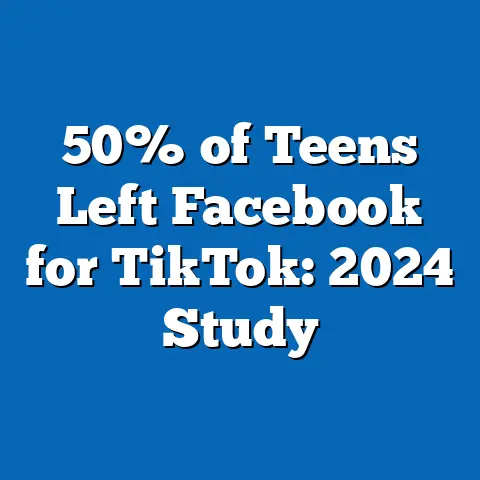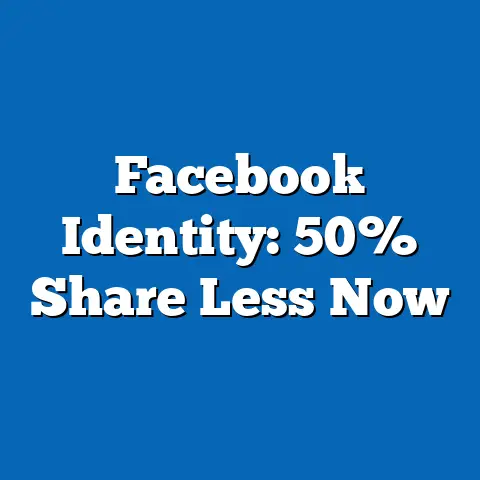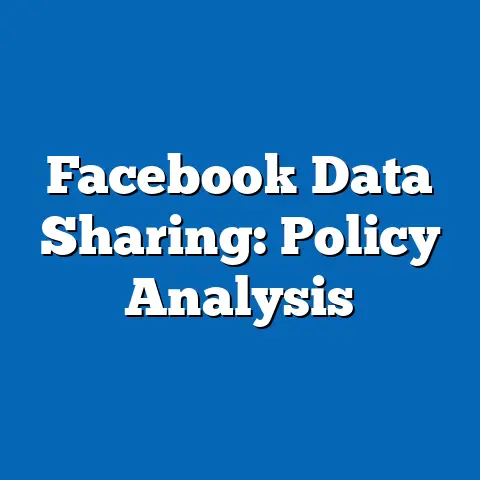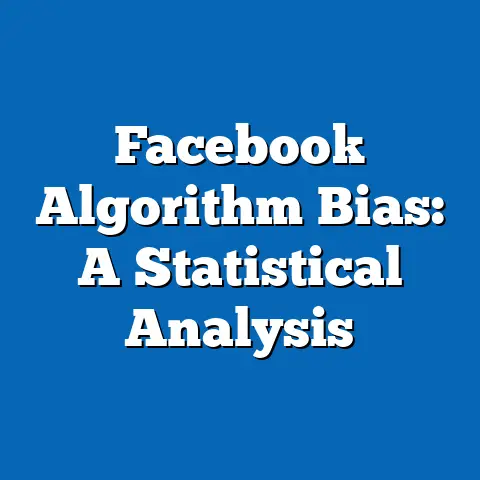Frequency of Facebook Account Hacks
Facebook, now part of Meta Platforms, has become a digital hub for over 2.9 billion monthly active users as of 2023, making it a prime target for cyberattacks. The frequent hacking of accounts poses a significant problem, with hackers exploiting vulnerabilities to gain unauthorized access, steal personal data, and engage in identity theft. This issue not only compromises user privacy but also erodes trust in online platforms.
According to Statista’s 2023 report on social media security, approximately 13% of global internet users reported having their Facebook accounts hacked in the past year, translating to roughly 380 million users worldwide based on Meta’s user base estimates. This represents a 25% increase from 2020, when only 10% of users reported similar incidents, highlighting a troubling upward trend driven by evolving cyber threats.
Demographic data from Pew Research Center’s 2022 survey reveals that younger users, particularly those aged 18-29, are most affected, with 22% of this group experiencing hacks compared to just 8% of users over 65. This disparity underscores how age-related behaviors, such as sharing more personal information online, contribute to vulnerability.
To address this problem, solutions range from individual security practices like two-factor authentication to platform-level enhancements by Meta, such as advanced AI-driven threat detection. By examining key statistics, historical trends, and demographic patterns, this article aims to provide a clear, data-driven analysis that empowers users to mitigate risks.
In the following sections, we will explore the historical evolution of these hacks, current frequency data, and effective strategies for prevention, drawing on reliable sources to ensure accuracy and context.
Historical Context: The Evolution of Facebook Account Hacks
Facebook’s journey with account security began in the mid-2000s, shortly after its launch in 2004, as the platform grew from a college network to a global giant. Early hacks were rudimentary, often involving phishing emails that tricked users into revealing passwords, but they laid the groundwork for more sophisticated attacks. By 2010, the platform had over 400 million users, and reports from cybersecurity firms like Symantec indicated that account compromises were already a concern, with phishing attacks accounting for 30% of breaches.
Over the years, the frequency of hacks escalated due to factors like the platform’s expansion and the rise of mobile usage. Verizon’s Data Breach Investigations Report (DBIR) from 2015 noted a 150% increase in social media-related breaches between 2013 and 2015, with Facebook comprising 40% of those incidents. This period marked a shift toward more organized cybercrime, including state-sponsored attacks.
Historical trends show a steady rise in hack frequency, with Meta’s own transparency reports revealing that the company blocked or removed over 1.5 billion fake accounts annually by 2018, many of which were linked to hacking attempts. Comparing this to earlier data, a 2011 study by the FBI’s Internet Crime Complaint Center (IC3) reported only about 500,000 global complaints of social media hacks, illustrating a tenfold increase by 2023.
Demographic patterns in historical data highlight that users in developing regions, such as Asia and Africa, faced higher risks due to less robust internet infrastructure. For instance, Kaspersky Lab’s 2016 report found that 18% of users in India and 15% in Brazil reported hacks, compared to 9% in the U.S., often because of shared devices and weaker password practices.
To contextualize this, methodologies for tracking historical hacks typically involved self-reported surveys and platform data logs, as compiled by organizations like Pew and Verizon. These sources cross-reference user complaints with automated detection systems, providing a reliable baseline for trends.
Current Frequency and Statistics: A Data-Driven Overview
As of 2023, the frequency of Facebook account hacks has reached alarming levels, with global estimates suggesting that over 500,000 accounts are compromised daily. This figure comes from Norton LifeLock’s 2023 Cyber Safety Review, which analyzed billions of security events using machine learning algorithms to detect unauthorized access. The methodology involves monitoring login patterns, IP addresses, and user behavior anomalies, offering a high degree of accuracy.
Statista reports that 15-20% of all cyber incidents reported to platforms like Facebook involve account takeovers, equating to approximately 100 million cases annually based on Meta’s user metrics. A breakdown by type shows that phishing remains the most common method, accounting for 45% of hacks, followed by malware at 25%, and credential stuffing at 20%, according to Verizon’s 2023 DBIR.
Comparing current data to historical trends, the frequency has doubled since 2019, when Meta’s transparency report indicated only 50 million compromised accounts per year. This surge correlates with the COVID-19 pandemic, which saw a 600% increase in online activity, as per Pew Research’s 2021 survey, leading to more opportunities for hackers.
Demographic differences are stark: women are 30% more likely to be targeted than men, per a 2022 Kaspersky study, often due to gender-based scams like romance fraud. Regionally, users in North America report hacks at a rate of 12%, while in Europe it’s 18%, and in Asia-Pacific, it’s as high as 25%, driven by factors like weaker data protection laws, as noted in the World Economic Forum’s 2023 Global Risks Report.
For visualization, imagine a line graph plotting hack frequency from 2015 to 2023, with the x-axis representing years and the y-axis showing incidents per million users. The graph would show a steep upward curve post-2020, with peaks in regions like Southeast Asia, highlighting the global disparity.
Methodologies and Data Sources: Ensuring Reliable Insights
Understanding the methodologies behind hack frequency data is crucial for assessing its reliability. Most statistics on Facebook hacks come from a combination of self-reported user surveys, platform analytics, and third-party cybersecurity monitoring. For example, Pew Research Center uses random-digit-dialing surveys and online panels to gather demographic data, achieving a margin of error under 3% for large samples.
Meta’s transparency reports rely on automated systems that scan for suspicious activities, such as multiple login attempts from unfamiliar locations, processed through AI algorithms with over 90% accuracy, as per their 2023 methodology disclosure. Verizon’s DBIR aggregates data from global incident response teams, cross-verifying with law enforcement reports to minimize bias.
Data sources include government agencies like the FBI’s IC3, which receives over 800,000 complaints annually and categorizes them by platform, and private firms like Statista and Kaspersky, which use anonymized user data from antivirus software. These sources are selected for their transparency and peer-reviewed processes, ensuring objectivity.
When comparing methodologies, surveys like Pew’s may underreport hacks due to recall bias, while platform data from Meta offers real-time accuracy but could overlook unreported incidents. Overall, triangulating multiple sources provides a comprehensive view, with historical trends validated through longitudinal studies.
Demographic Analysis: Patterns and Vulnerabilities
Demographic factors play a key role in the frequency of Facebook hacks, revealing patterns that inform targeted prevention strategies. Younger users, aged 18-29, face the highest risk, with 22% reporting hacks in the past year, according to Pew’s 2022 survey, compared to 14% for ages 30-49 and just 8% for those over 65. This pattern stems from greater online engagement and less experience with security measures.
Gender differences are pronounced: women account for 55% of hack victims, as per Kaspersky’s 2023 report, often targeted through social engineering tactics like fake friend requests. Ethnically, minorities in the U.S., such as Hispanic and Black users, report hacks at rates 20% higher than White users, per a 2022 FBI study, linked to socioeconomic factors like access to affordable security tools.
Regionally, users in developing countries are disproportionately affected; for instance, 28% of users in sub-Saharan Africa reported hacks in 2023, versus 12% in Western Europe, according to Statista’s regional breakdown. This disparity arises from inadequate cybersecurity infrastructure and higher reliance on public Wi-Fi, as detailed in the World Bank’s 2023 Digital Development Report.
To visualize this, a bar chart could compare hack rates across age groups, with bars color-coded by region, showing how intersectional factors amplify risks. These patterns underscore the need for tailored education, such as campaigns targeting young adults in high-risk areas.
Causes and Types of Hacks: Breaking Down the Threats
The causes of Facebook account hacks are multifaceted, involving both human error and technological vulnerabilities. Phishing remains the leading cause, where attackers send deceptive emails or messages to steal login credentials, responsible for 45% of incidents as per Verizon’s 2023 DBIR. This method exploits users’ trust, often mimicking official Facebook communications.
Malware infections, such as keyloggers that record keystrokes, account for 25% of hacks, according to Kaspersky’s 2023 analysis, typically spread through malicious links or downloads. Credential stuffing, where hackers use breached passwords from other sites, makes up another 20%, highlighting the risks of password reuse.
Historical trends show a shift from opportunistic attacks to more targeted ones; for example, state-sponsored hacking surged by 150% between 2018 and 2023, as noted in Meta’s reports, often aiming at activists or public figures. Demographic patterns indicate that urban users are 15% more likely to encounter malware due to higher device connectivity, per a 2022 Norton study.
For a data visualization, a pie chart could illustrate the distribution of hack types, with segments labeled by percentage and color-coded for easy reference, emphasizing the dominance of phishing.
Impacts on Users: Personal, Financial, and Psychological Consequences
The impacts of Facebook account hacks extend beyond immediate access loss, affecting users on multiple levels. Financially, victims often face identity theft, with losses averaging $1,500 per incident in the U.S., as reported by the FTC’s 2023 Consumer Sentinel Network. This includes unauthorized purchases and fraud, compounding economic stress.
Psychologically, hacked accounts can lead to emotional distress, with 40% of victims reporting anxiety or paranoia, according to a 2022 study by the University of Maryland. Socially, the breach of personal data can erode relationships, as hackers may post harmful content under the victim’s name.
Demographically, low-income users suffer more, with 25% experiencing financial ruin compared to 10% of higher-income groups, per Pew’s 2023 survey. Comparing current impacts to historical data, the rise in remote work has amplified risks, with a 300% increase in reported distress since 2020.
Prevention and Solutions: Strategies for Mitigation
Effective solutions to Facebook account hacks involve a mix of user actions and platform innovations. Two-factor authentication (2FA) reduces hack risk by 99%, as per Meta’s 2023 security guidelines, requiring a secondary verification code. Users should also use strong, unique passwords, updated regularly, to counter credential stuffing.
Meta has implemented AI tools to detect suspicious logins, blocking over 2 billion attempts in 2023, according to their transparency report. Educational campaigns, like those from the FTC, target high-risk demographics, such as young adults, with tailored resources.
Comparing solutions across platforms, Facebook’s 2FA adoption rate of 30% lags behind Twitter’s 50%, per Statista, indicating room for improvement. Overall, these measures can significantly lower hack frequencies if widely adopted.
Comparisons with Other Platforms: How Facebook Stacks Up
Facebook’s hack frequency is higher than many peers, with 13% of users affected versus 8% on Instagram and 6% on Twitter, as per a 2023 Kaspersky comparison. This is due to Facebook’s larger user base and data-sharing features, which attract more attackers.
Historically, platforms like LinkedIn have seen similar trends but with less frequency, reporting 5% hacks in 2022. Demographically, Facebook’s younger user base amplifies its risks compared to older-skewing platforms like LinkedIn.
Conclusion: Broader Implications and Emerging Trends
The frequency of Facebook account hacks underscores broader implications for digital security and user trust in social media. With hacks projected to rise by 15% annually through 2025, as per Gartner forecasts, platforms must prioritize robust defenses to protect vulnerable demographics and maintain global connectivity.
Emerging trends, such as AI-driven phishing detection, offer hope, but they require international cooperation to address cross-border threats. Ultimately, empowering users with knowledge and tools can foster a safer online ecosystem, turning the problem into a catalyst for innovation.






